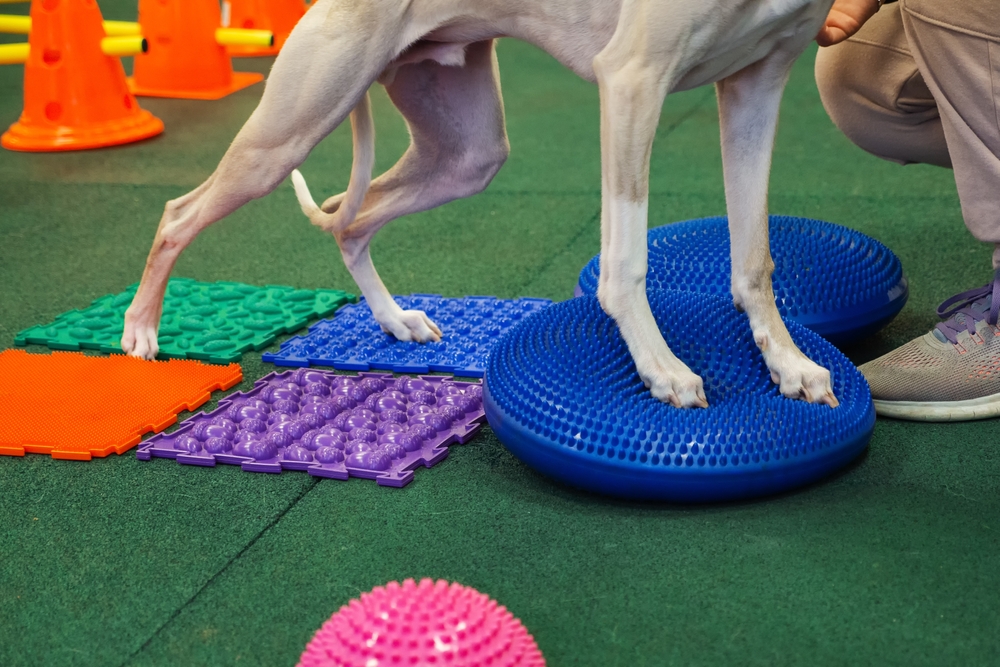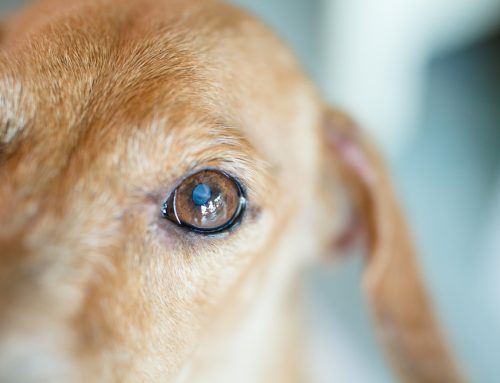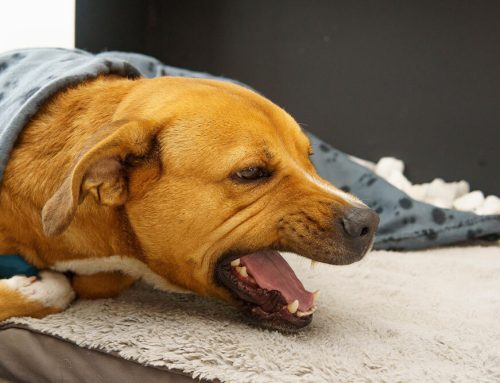Is Your Pet Limping? Don’t Wait to Investigate
A puppy bounds across the yard, then comes back holding up one paw. An older dog hesitates on the stairs, favoring a back leg. Limping is a common symptom with many possible causes, from minor injuries to more advanced joint problems. Diagnostic testing pinpoints the reason so the right care can begin. At Boca Midtowne Animal Hospital in Boca Raton, FL, pets receive thorough evaluation in a Fear Free setting, ensuring both answers and comfort during the process.
Limping in Pets: Causes, Care, and When to Seek Help
When your dog or cat starts limping, it’s their way of telling you something isn’t right. The challenge lies in determining whether you’re dealing with a minor issue that will resolve on its own or a serious condition requiring immediate attention. Understanding the common causes of limping in pets helps you make informed decisions about when to seek veterinary care.
Injuries and Trauma that Cause Limping in Pets
Many limping episodes begin with simple accidents during play or daily activities. Cracked or torn nails frequently cause sudden limping, especially in active dogs who catch their claws on surfaces. While painful, these injuries often heal well with proper care. Similarly, sprained legs from jumping or running can cause temporary lameness that improves with rest.
More serious trauma presents different challenges. Broken bones require immediate veterinary attention and often result from falls, vehicle accidents, or significant impacts. Muscle tears can occur during intense exercise or sudden movements, causing persistent limping that worsens with activity.
Joint and Bone Conditions that Cause Limping in Pets
Age-related conditions frequently develop gradually, making them easy to overlook initially. Arthritis in cats is particularly common but often goes undiagnosed because cats hide discomfort well. Pet owners might notice subtle changes like reluctance to jump or decreased activity before obvious limping appears.
Canine cruciate ligament injury represents one of the most frequent causes of rear leg lameness in dogs. This condition can develop suddenly during play or gradually over time, particularly in larger breeds. Early diagnosis and treatment prevent further joint damage and improve long-term outcomes.
Developmental Issues that Cause Limping in Pets
Some pets are born with or develop structural problems that eventually cause limping. Hip dysplasia affects many breeds and can manifest in young animals or later in life. The condition causes abnormal hip joint development, leading to pain and mobility issues.
Patellar luxation, where the kneecap dislocates from its normal position, commonly affects smaller dogs. While some pets live comfortably with mild cases, severe luxation causes significant discomfort and requires surgical correction.
Infections and External Causes that Cause Limping in Pets
Sometimes limping results from infections or foreign objects. Bite wounds from other animals can introduce bacteria deep into tissues, causing swelling and pain that affects mobility. These injuries may appear minor initially but can develop into serious infections without proper treatment.
In certain regions, foxtails pose unique risks to pets. These grass seeds can penetrate paw pads or work their way between toes, causing intense pain and potentially dangerous migrations through body tissues if not promptly removed.
Helpful Diagnostic Tools and Techniques
Accurate diagnosis forms the foundation of effective treatment. Visual examination alone rarely reveals the complete picture, especially with internal injuries or developing conditions. Modern diagnostic tools allow veterinarians to see exactly what’s causing limping, leading to targeted treatments that address root causes rather than just managing symptoms. At Boca Midtowne Animal Hospital, comprehensive evaluation combines multiple diagnostic approaches to ensure nothing is overlooked.
Imaging Techniques
X-rays remain the cornerstone of orthopedic diagnosis, revealing bone fractures, joint abnormalities, and signs of arthritis. These images help veterinarians assess bone alignment, joint spacing, and structural integrity. For complex cases requiring more detailed information, CT scans provide three-dimensional views that reveal subtle fractures or joint problems not visible on standard radiographs.
When soft tissue injuries are suspected, MRIs offer unparalleled detail of muscles, ligaments, and cartilage. This technology proves particularly valuable for diagnosing cruciate ligament tears, muscle injuries, and spinal conditions. Ultrasound imaging provides real-time visualization of soft tissues, making it excellent for evaluating muscle tears, tendon injuries, and fluid accumulation around joints.
Laboratory Tests
Blood work reveals systemic conditions that might cause limping, such as infections, immune-mediated diseases, or metabolic disorders. Digital cytology allows rapid examination of fluid samples from swollen joints or suspicious masses, providing immediate insights into inflammatory processes or infections.
Physical Examinations
Thorough hands-on evaluation remains irreplaceable in diagnosing limping causes. In a Fear Free environment, veterinarians can perform detailed examinations without causing additional stress to already uncomfortable pets. This approach includes assessing range of motion, identifying areas of pain or swelling, and evaluating gait patterns that provide crucial diagnostic clues.
Treatment and Management for Limping Pets
Medical and Surgical Interventions for Limping Pets
Treatment approaches vary dramatically depending on the underlying cause of limping. In some cases, simple controlled rest is enough to fix the problem. Other issues, like arthritis, can be managed with long-term pain medications. Some issues need medications to control the pain and condition causing the limp. Conditions like immune-mediated polyarthropathy require immunosuppressive medications to control the body’s inappropriate immune response affecting multiple joints. These cases often respond well to medical management when diagnosed early.
Surgical intervention becomes necessary for many structural problems. Hip dysplasia treatment options range from conservative management in mild cases to total hip replacement in severe situations. The timing and type of surgery depend on the pet’s age, severity of symptoms, and activity level.
Home Care and Management for Limping Pets
Supporting your pet’s recovery often involves modifications to daily routines and activities. For dogs with arthritis or joint problems, implementing warm-ups and cooldowns helps maintain mobility while preventing injury. These simple exercises, similar to those used by human athletes, prepare joints for activity and help them recover afterward.
Regular wellness exams play a crucial role in monitoring chronic conditions and adjusting treatments as needed. These visits allow veterinarians to track progress, modify medications, and catch new problems before they become serious.
Preventive Measures
Prevention often proves more effective than treatment when it comes to mobility issues. Maintaining appropriate weight reduces stress on joints, while regular exercise keeps muscles strong and joints flexible. Routine veterinary care identifies developing problems before they cause obvious symptoms, allowing for early intervention that can prevent or delay serious complications.

FAQs and Common Concerns for Limping Pets
What should I do when I first notice my pet limping?
Observe your pet’s behavior and try to identify when the limping occurs. Is it constant or only after activity? Does it affect one leg or multiple legs? Restrict activity and monitor for 24-48 hours. If limping persists, worsens, or is accompanied by other symptoms like loss of appetite or lethargy, seek veterinary care promptly.
How can I tell if limping is serious or minor?
Several factors indicate serious problems requiring immediate attention: inability to bear weight on the affected limb, visible deformity, excessive swelling, signs of pain when the area is gently touched, or limping that doesn’t improve with rest. Additionally, any limping in very young or very old pets warrants prompt evaluation.
Do pets really hide pain as much as people say?
Yes, particularly cats, who instinctively conceal weakness that might make them vulnerable in the wild. Common pain signs include decreased activity, changes in eating habits, altered sleeping patterns, and subtle behavioral changes. Many pets continue normal activities despite significant discomfort, making professional evaluation essential for accurate assessment.
Boca Midtowne Animal Hospital is Dedicated to Your Pet’s Mobility
Limping signals that your pet needs help, whether from a simple injury or a complex condition requiring ongoing management. Persistent limping, inability to bear weight, visible swelling, or behavioral changes alongside mobility issues all warrant immediate veterinary attention.
At AAHA-accredited Boca Midtowne Animal Hospital, advanced diagnostics and urgent care services help identify exactly what’s causing your pet’s discomfort, leading to targeted treatments that restore comfort and mobility. Don’t wait for limping to worsen or hope it resolves on its own. Schedule an appointment today, and let our experienced team help your pet return to pain-free activity. Call Boca Midtowne Animal Hospital at (561) 218-2210 to discuss your pet’s needs and arrange the care they deserve.








Leave A Comment